Author: Cade Jobe
Typically, darker beer styles possess noticeable roast characteristics ranging from chocolate and coffee to acrid and ashy. However, there are some styles where a dark brown to black color is desired without the strong flavors imparted by grains such as Roasted Barley and Black Malt. One such example that is said to have been invented in the early ‘90s and grew in prominence over the following decade is Black IPA, aka Cascadian Dark Ale, which in addition to being assertively hopped, is known for having restrained roast flavors despite its dark color.
It’s widely believed that the more pungent characteristics from roasted grains are a function of the husks, which get burnt during the roasting process, being in contact with the hot mash. To counter this, some brewers prefer using dehusked grains or “capping the mash” when brewing styles like Black IPA, though another approach involves steeping the roasted grains in cool water over an extended period of time then adding it toward the end of the mash rest.
In my brewing, I’ve tended to reserve darker grains for more traditional styles like Porter and Stout, which I expect to have roasted characteristics. However, in considering the best approach to take for a Black IPA I was recently designing, I was reminded of a past xBmt where tasters were able to reliably tell apart a Robust Porter mashed with the roasted grains from one where the roasted grains were cold steeped. Might combining this method with the use of a dehusked roasted grain work well in a Black IPA? I decided to put it to the test!
| PURPOSE |
To evaluate the differences between a Black IPA where the roasted grains are cold steeped with the liquor being added to the wort and one where the roasted grains are included in the mash.
| METHODS |
For this xBmt, I designed an IPA recipe with just enough Midnight Wheat to achieve my desired color.
Four Track Mind
Recipe Details
| Batch Size | Boil Time | IBU | SRM | Est. OG | Est. FG | ABV |
|---|---|---|---|---|---|---|
| 5.5 gal | 60 min | 86.3 | 32.9 SRM | 1.07 | 1.006 | 8.4 % |
| Actuals | 1.07 | 1.006 | 8.4 % | |||
Fermentables
| Name | Amount | % |
|---|---|---|
| Pale Ale Malt 2-Row | 12 lbs | 80.67 |
| Munich Malt | 2.25 lbs | 15.13 |
| Midnight Wheat Malt | 10 oz | 4.2 |
Hops
| Name | Amount | Time | Use | Form | Alpha % |
|---|---|---|---|---|---|
| Magnum | 28 g | 60 min | Boil | Pellet | 14.2 |
| Galena | 28 g | 30 min | Boil | Pellet | 10.5 |
| Citra | 28 g | 5 min | Boil | Pellet | 13.2 |
| Amarillo LUPOMAX | 20 g | 5 min | Boil | Pellet | 14 |
| Ekuanot LUPOMAX | 20 g | 5 min | Boil | Pellet | 19 |
| Citra | 28 g | 3 days | Dry Hop | Pellet | 13.2 |
| Amarillo LUPOMAX | 20 g | 3 days | Dry Hop | Pellet | 14 |
| Ekuanot LUPOMAX | 20 g | 3 days | Dry Hop | Pellet | 19 |
Yeast
| Name | Lab | Attenuation | Temperature |
|---|---|---|---|
| Barbarian (A04) | Imperial Yeast | 74% | 32°F - 32°F |
Notes
| Water Profile: Ca 18| Mg 1 | Na 6 | SO4 8 | Cl 10 |
Download
| Download this recipe's BeerXML file |
A couple days before brewing, I added 10 oz/295 grams of Midnight Wheat to 2 liters of cool water, which I covered and let steep overnight.
The following day, I collected the water for both batches and adjusted them to the same mineral profile before turning on my electric controllers.
Once properly heated, I incorporated the milled grains, only one of which included the Midnight Wheat, before setting the controllers to maintain the same mash temperature.
While waiting on the mashes, I weighed out the kettle hop additions.
With 5 minutes left in the 60 minute mash rest, I added the cold steeped grains to one batch and stirred to incorporate. Once the mash rests were complete, I removed the grains then boiled each batch for 60 minutes with hops added at the times stated in the recipe.
When the boils were complete, I racked identical volumes of wort from each batch to separate Brew Buckets before taking hydrometer measurements showing both were at the same OG.
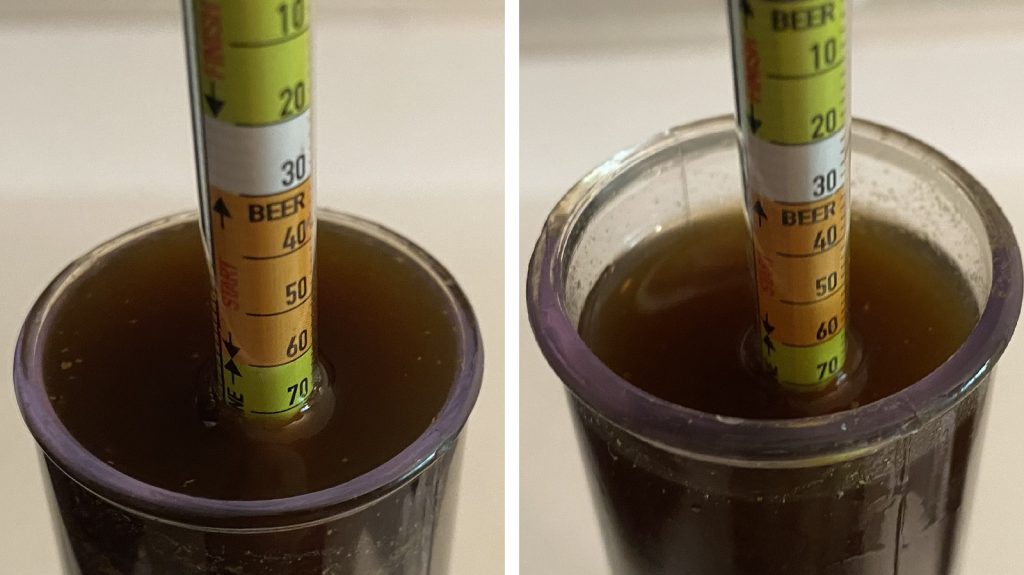
I moved the worts to finish chilling in my fermentation chamber. Once the target fermentation temperature of 68°F/20°C was reached, I pitched a pouch of Imperial Yeast A04 Barbarian into each fermenter.
I added the dry hop additions 3 days into fermentation then waited another 4 days before taking hydrometer measurements showing both beers reached the same FG.
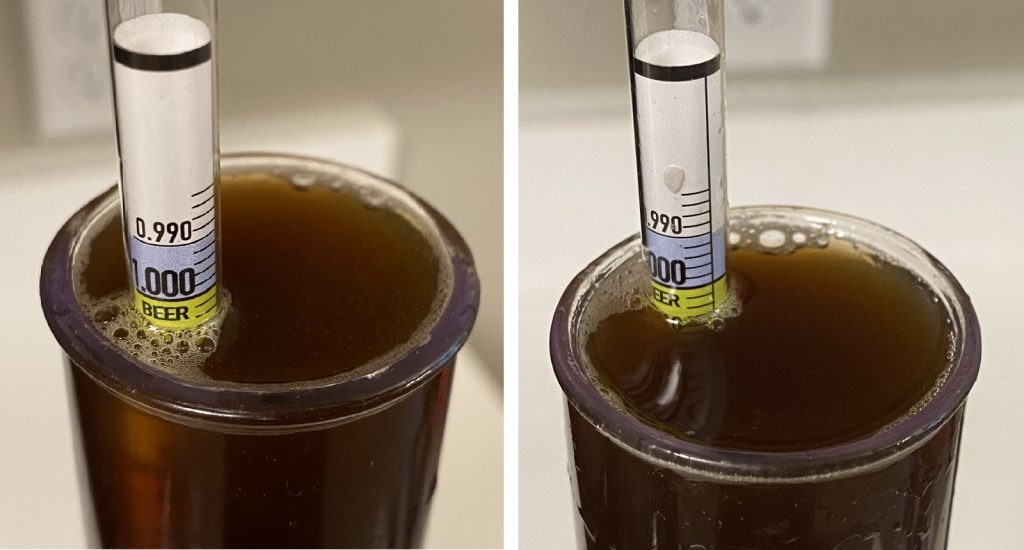
At this point, I pressure transferred the beers to CO2 purged kegs.
The filled kegs were placed on gas in my keezer and allowed to condition for a week before they were ready for evaluation.
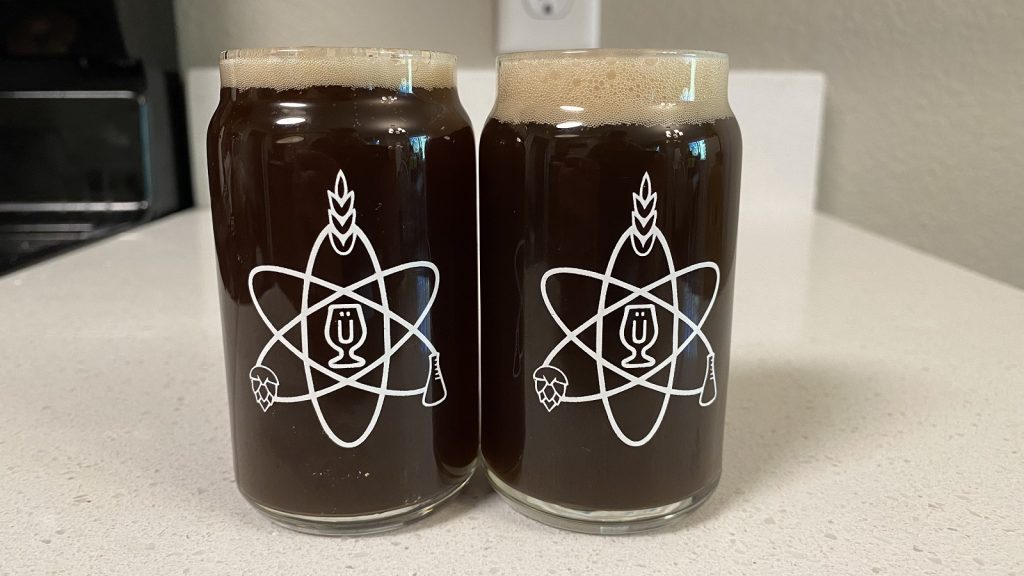
| RESULTS |
Due to social distancing practices as a result of the COVID-19 pandemic, data for this xBmt was unable to be collected in our typical manner. As such, temporary adaptations were made involving the author completing multiple semi-blind triangle tests in as unbiased a way as possible.
Utilizing 4 opaque cups of the same color where 2 were inconspicuously marked, one set was filled with the beer that had cold steeped dark grains while the other set was filled with the beer made with mashed dark grains. For each triangle test, 3 of the 4 cups were indiscriminately selected, thus randomizing which beer was the unique sample for each trial. Following each attempt, I noted whether I was correct in identifying the unique sample. Out of the 10 semi-blind triangle tests I completed, I needed to identify the unique sample at least 7 times (p<0.05) in order to reach statistical significance. In the end, I correctly identified the unique sample 9 times (p=0.0004), indicating my ability to reliably distinguish a Black IPA made with cold steeped roasted grains from one where the roasted grains were included in the mash.
While these beers were certainly more similar than they were different, what made them distinguishable to me was the softer roasted character in the cold steeped version that resulted in a slight tobacco flavor. I enjoyed both beers, but my preference was for the version where the roasted grains were included in the mash.
| DISCUSSION |
There are various methods brewers rely on when using roasted grains in beer, the simplest of which is to include them with the rest of the grains in the mash, though some believe this can lead to an unpleasant harsh characteristic. One alternative involves steeping the roasted grains in cool water over a period of time then adding it toward the end of the mash, which is said to result in a smoother roast character with less harshness. Indeed, I was able to reliably distinguish a Black IPA made with the roasted grains included in the mash from one where the roasted grains were cold-steeped.
It’s well established that temperature has an impact on certain reactions, and seeing as both beers were made with the same amount of roasted grain, this seems a plausible explanation for these results. While some complain that including roasted grains in the mash results in an undesirable harshness, that’s not what I perceived, rather the cold-steeped batch came across as less full flavored, hence I preferred the full mash version. Interestingly, neither batch was necessarily “roasty,” which I believe supports claims that Midnight Wheat can be used to impart color with more restrained roast character.
I wasn’t necessarily surprised by the fact tasters in a previous xBmt on this topic could tell apart a Robust Porter where the roasted grains were either included in the mash or cold-steeped, as the grains used were husked barley varieties. This is what ultimately inspired me to perform this xBmt, as I wondered if using a huskless grain like Midnight Wheat might mitigate the differences produced by either method. In the end, these beers were quite noticeably different, and given my preference for the one made with roasted grains included in the mash, that’s the method I’ll stick to moving forward, which also happens to require slightly less effort.
If you have any thoughts about this xBmt, please do not hesitate to share in the comments section below!
Support Brülosophy In Style!
All designs are available in various colors and sizes on Amazon!
Follow Brülosophy on:
FACEBOOK | TWITTER | INSTAGRAM
If you enjoy this stuff and feel compelled to support Brulosophy.com, please check out the Support page for details on how you can very easily do so. Thanks!
Recipe Details
| Batch Size | Boil Time | IBU | SRM | Est. OG | Est. FG | ABV |
|---|---|---|---|---|---|---|
| 5.5 gal | 60 min | 86.3 | 32.9 SRM | 1.07 | 1.006 | 8.4 % |
| Actuals | 1.07 | 1.006 | 8.4 % | |||
Fermentables
| Name | Amount | % |
|---|---|---|
| Pale Ale Malt 2-Row | 12 lbs | 80.67 |
| Munich Malt | 2.25 lbs | 15.13 |
| Midnight Wheat Malt | 10 oz | 4.2 |
Hops
| Name | Amount | Time | Use | Form | Alpha % |
|---|---|---|---|---|---|
| Magnum | 28 g | 60 min | Boil | Pellet | 14.2 |
| Galena | 28 g | 30 min | Boil | Pellet | 10.5 |
| Citra | 28 g | 5 min | Boil | Pellet | 13.2 |
| Amarillo LUPOMAX | 20 g | 5 min | Boil | Pellet | 14 |
| Ekuanot LUPOMAX | 20 g | 5 min | Boil | Pellet | 19 |
| Citra | 28 g | 3 days | Dry Hop | Pellet | 13.2 |
| Amarillo LUPOMAX | 20 g | 3 days | Dry Hop | Pellet | 14 |
| Ekuanot LUPOMAX | 20 g | 3 days | Dry Hop | Pellet | 19 |
Yeast
| Name | Lab | Attenuation | Temperature |
|---|---|---|---|
| Barbarian (A04) | Imperial Yeast | 74% | 32°F - 32°F |
Notes
| Water Profile: Ca 18| Mg 1 | Na 6 | SO4 8 | Cl 10 |
Download
| Download this recipe's BeerXML file |


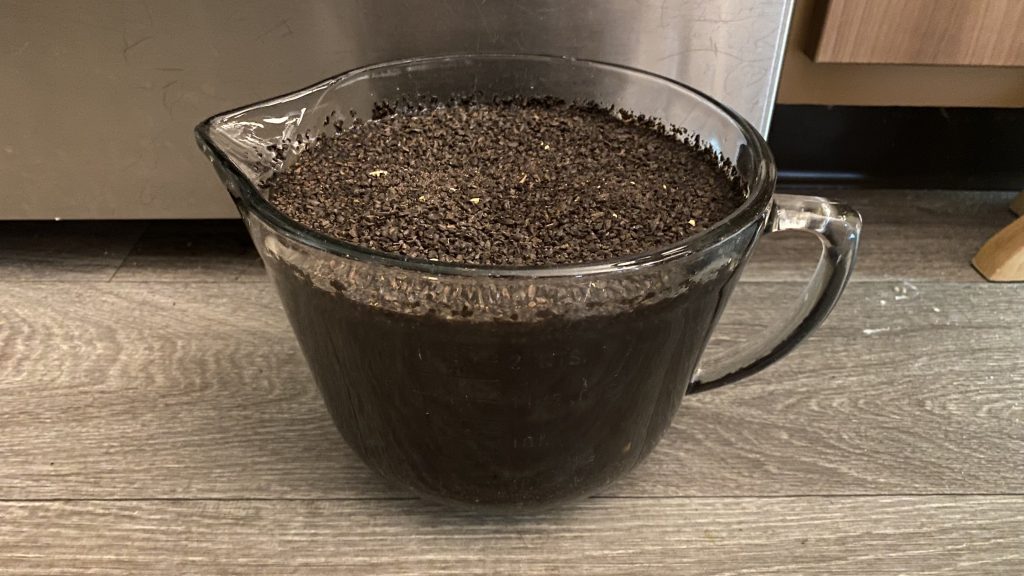
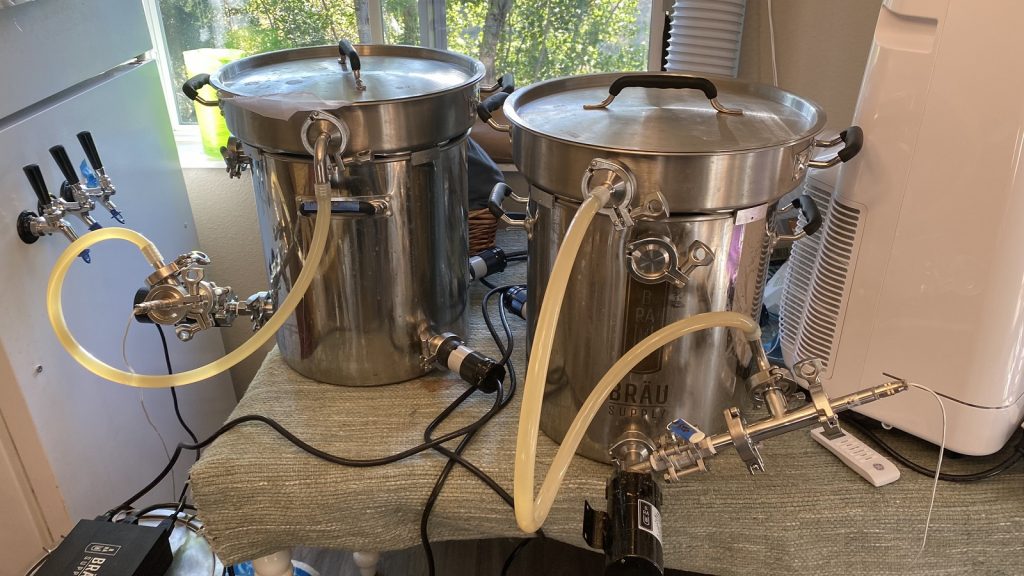
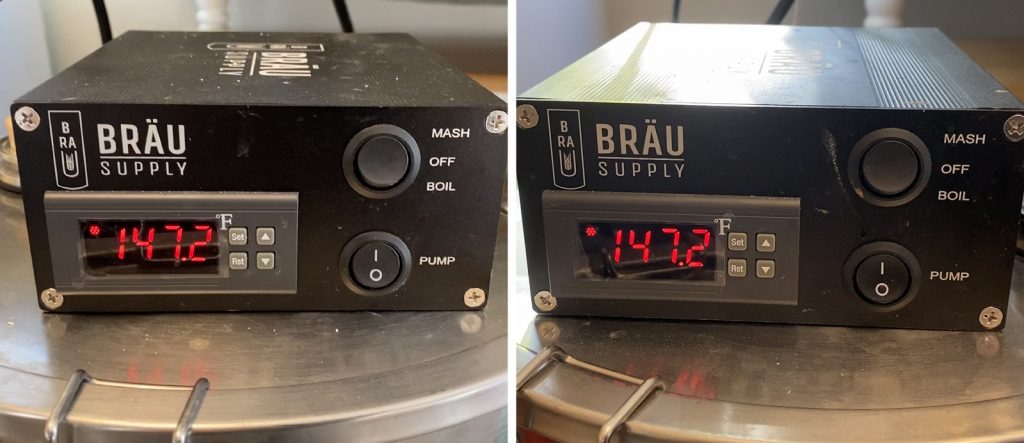
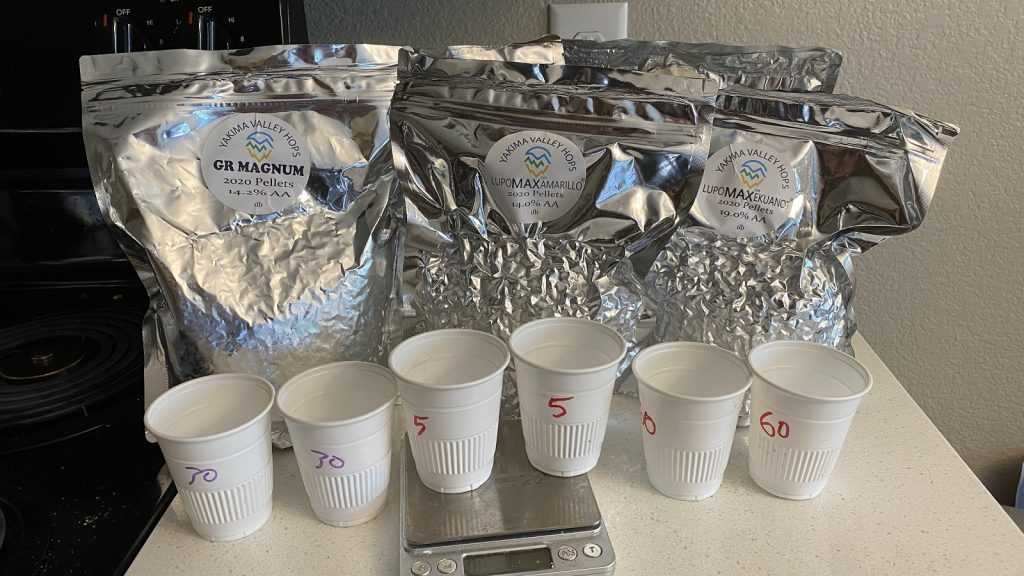
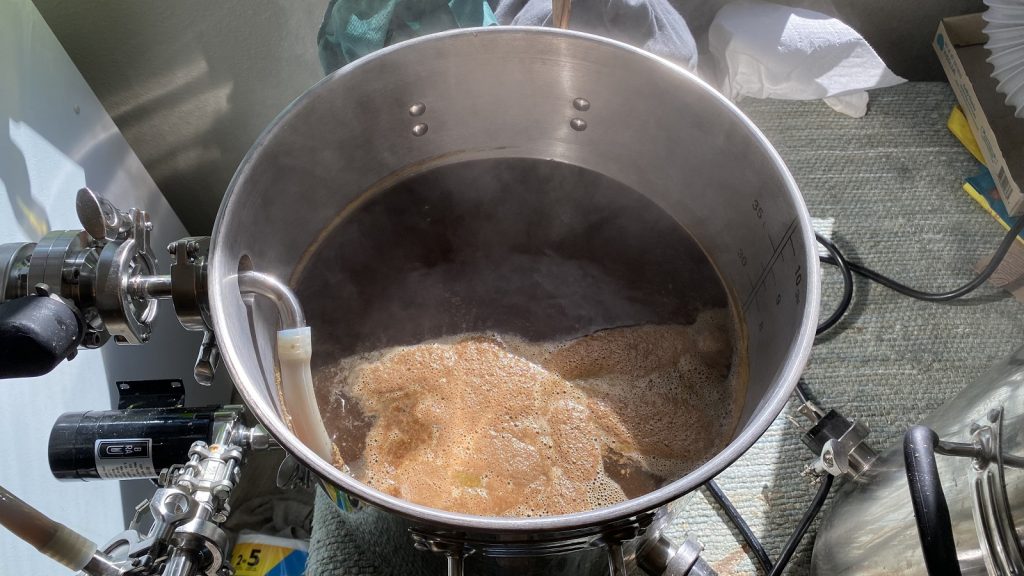
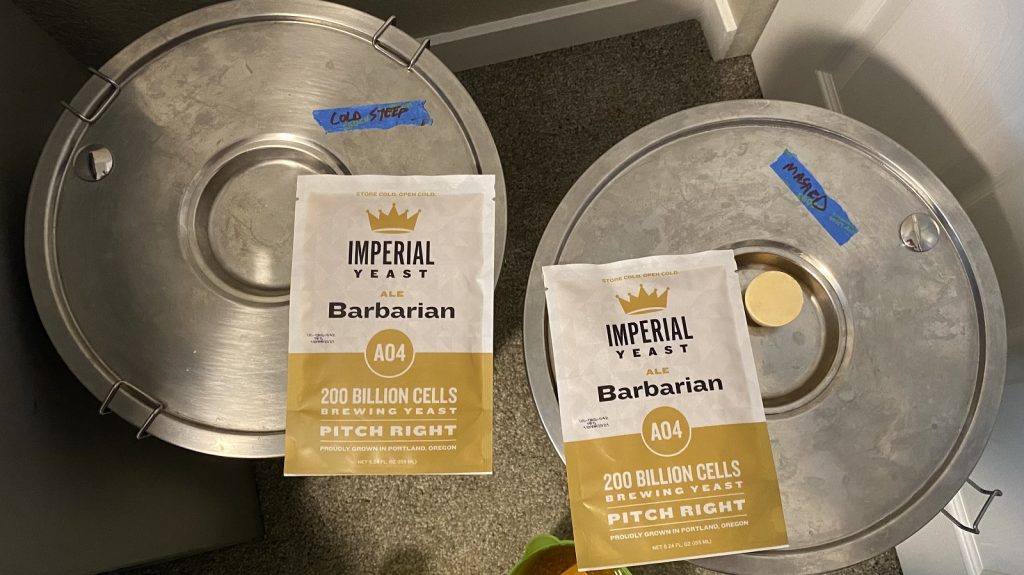
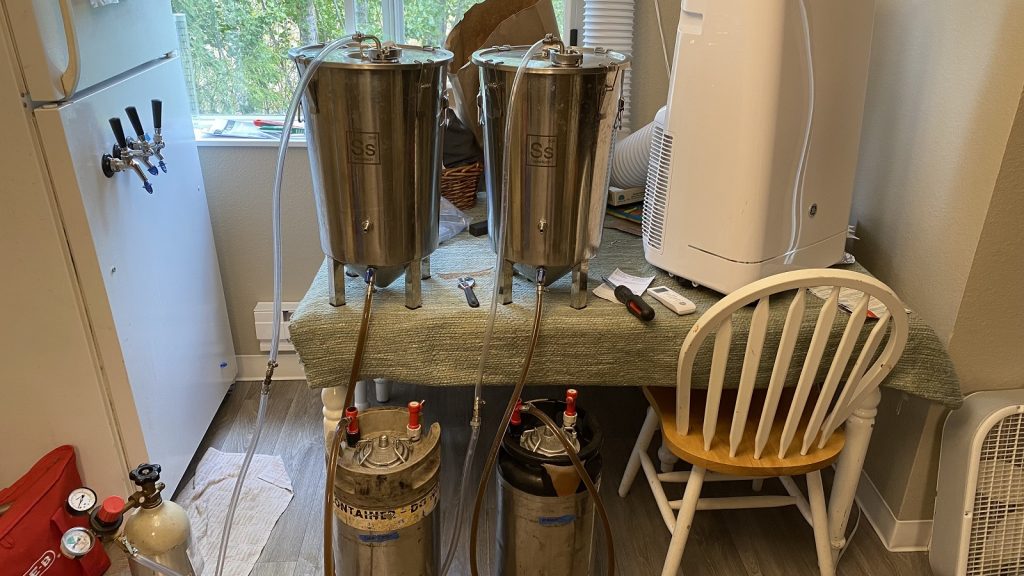











11 thoughts on “exBEERiment | Impact Cold Steeping Roasted Grains Has On Black IPA”
I think the rule of thumb for cold steeping roasted grains is to use twice as much. Any thoughts on that?
I don’t think it’s a rule of thumb, more of a suggestion. To me the difference between cold steep, warm steep, hot steep is the transition from aroma dominance to flavor dominance. It is exactly the same as when making coffee – cold steep (cold brew) vs hot brew. To me the takeaway is that Yes, the result is different, and then what you want to do with that difference is the next question.
I think that’s spot on and also mirrors what I’ve seen when cold steeping vs hot steeping.
I agree with everything John mentioned, and I’d also add that for this black IPA, I only wanted color not flavor. In this experiment, I achieved the same color in each batch using equal amounts of dark grains. So, if all you’re trying to achieve is color, adding double the amount of grains to the cold steep might be a waste of grains.
Did you notice anything in the mouth feel, head retention, body?
Another thing to note/discuss in all this is that water profile makes a huge difference here (in my experience).
I didn’t notice any difference in head retention or body, but there was a slight difference in mouthfeel. The cold steeped batch was softer.
I could definitely see water profile making a difference. The water I used for this batch was relatively soft.
I was rather certain that you would not be able to tell a difference, with all the dry hops and stuff. Very cool!
How did you get 90%+ apparent attenuation from A04 Barbarian that is advertised at 73-74%?
I find this very surprising? Can you comment on attenuation please?
Enjoyed this experiment! One clarification for folks. Wheat is huskless so Midnight Wheat is not dehusked. It come without a husk naturally.
This was a timely episode, as I have a Black NEIPA in the the brewing queue, because it sounds like an interesting challenge. Although I think I’m going to coin the name NEIDA (New England Indian Dark Ale) 🙂 LOL. My recipe calls for just under 3% of of both Midnight Wheat and Carafa III Special to get the dark color. After listening to the episode I think I’m going to try the mash capping method. The theory is the flaked oats, torrified wheat, higher chloride ratio, and copious amount of hops will soften any harshness of the dark grains and result in a very slight roasty flavor. Should be interesting…
I made a black IPA (cascadian dark ale rather) with cold steeped roasted barley and dark chocolate and otherwise a fairly standard IPA recipe with a small amount of oats.
I steeped the roasted barley a bit longer than the chocolate (unplanned, life got in the way) and noticed that they gave a really different aroma – the roasted barley was very much a roasty kind of coffee/chocolate thing and smelt delicious, while the chocolate malt gave a wierd tobaccoey kind of waft, that I was quite worried about – i almost just bailed on adding the cold steep completely, but went ahead in the end…
That tobaccoey thing didn’t come through for me at all in the final beer which is bloody delicious, and the hops (all NZ, I’m a kiwi) work really nicely with the cold steeped black malts.
But I thought it was really interesting when I got that tobacco smell I thought immediately of this exbeeriment (and the podcast). Is there something in midnight wheat that would be similar to dark chocolate malt, but not roasted barley? Maybe certain malts are better for cold steeping?